Exploring wildlife offers a myriad of benefits that extend beyond the realm of adventure and curiosity. It provides an enriching experience, fostering a deeper connection with nature and promoting conservation awareness. Learning through wildlife exploration, individuals gain an understanding of ecosystems, biodiversity, and the delicate balance that sustains our planet. The benefits include not only personal growth and appreciation for the natural world but also contribute to the imperative task of preserving Earth’s diverse ecosystems for future generations.
Table of contents
- Embracing Your Inner Naturalist
- The Call of the Wild: Planning Your Wildlife Exploration
- Tools of the Trade: Essential Gear for Wildlife Exploration
- Learning Through Wildlife Exploration: Educational Insights
- Conservation and Stewardship: Making a Difference
- Overcoming Challenges: Navigating the Wild
- Capturing the Moment: Documenting Your Wildlife Discoveries
- Conclusion
- Frequently Asked Questions
Embracing Your Inner Naturalist
In our fast-paced, technology-driven world, it’s easy to lose touch with the natural world around us. However, there’s a timeless and profound joy that comes from embracing your inner naturalist — someone who finds solace, inspiration, and curiosity in the beauty of the outdoors.
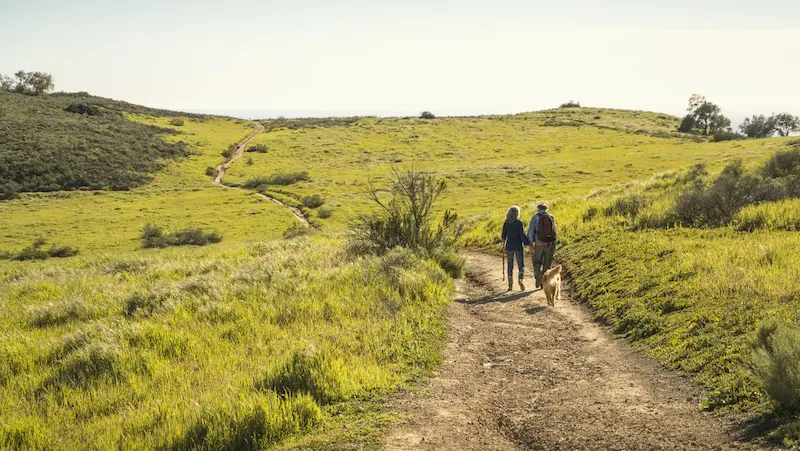
Defining a Naturalist and the Inherent Connection with Nature:
A naturalist, at its core, is someone who studies and appreciates the natural world. Beyond the scientific aspect, being a naturalist is also about developing a deep, personal connection with nature. It involves observing the intricacies of the environment, understanding ecosystems, and cultivating a sense of wonder about the world around us.
The inherent connection with nature that comes with being a naturalist is both grounding and rejuvenating. It opens up a pathway to appreciate the beauty in the smallest details — the delicate dance of leaves in the wind, the vibrant hues of a sunrise, or the intricate patterns on a butterfly’s wings. This connection fosters a sense of responsibility towards the environment and promotes sustainable living.
Personal Anecdotes or Stories to Inspire Readers:
The Healing Power of Nature:
Share a personal story about a challenging time when spending time in nature provided solace and healing. Whether it’s a quiet moment by a lake or a hike through the woods, these experiences can be transformative and serve as a reminder of the therapeutic power of nature.
Unexpected Discoveries:
Narrate an instance when your curiosity led to a surprising discovery in the natural world. It could be stumbling upon a rare plant during a walk or observing a unique behavior in a local bird species. Such stories can ignite the reader’s sense of wonder and encourage them to explore their surroundings with a fresh perspective.
Connecting Generations Through Nature:
Share an anecdote about how nature has played a role in connecting generations within your family. Whether it’s a tradition of camping trips or a shared love for gardening, emphasize the bond that nature can create across different ages and backgrounds.
Highlighting the Importance of Curiosity and Observation:
Curiosity as a Catalyst:
Discuss the role of curiosity in nurturing one’s inner naturalist. Encourage readers to ask questions, seek answers, and approach the natural world with a childlike curiosity. It’s this curiosity that opens the door to new discoveries and a deeper understanding of the environment.
The Art of Observation:
Emphasize the significance of keen observation in developing a naturalist’s mindset. Encourage readers to take the time to truly see their surroundings — notice the patterns, colors, and subtle changes that occur in nature. Observation is a skill that enhances our appreciation for the world’s intricacies.
Fostering a Sustainable Lifestyle:
Connect curiosity and observation to the broader concept of sustainability. Highlight how being a naturalist can inspire eco-friendly choices in everyday life. From reducing waste to supporting local biodiversity, small actions can have a positive impact on the environment.
The Call of the Wild: Planning Your Wildlife Exploration
Embarking on a wildlife exploration is not just a journey; it’s an immersive experience that connects you with the natural world in its purest form. The thrill of encountering untamed creatures in their habitats and the educational opportunities that arise from observing their behaviors are unparalleled. To ensure a successful and enriching adventure, careful planning is essential.

Choosing the Right Locations for Wildlife Exploration:
The success of your wildlife adventure heavily depends on selecting the right locations. Consider the following factors when choosing your destination:
Biodiversity Hotspots: Look for regions renowned for their biodiversity, such as the Amazon Rainforest, the Serengeti, or the Great Barrier Reef. These areas offer a wide variety of wildlife, providing a more comprehensive experience.
Seasonal Patterns: Research the seasonal patterns of your chosen destination. Certain times of the year may offer better opportunities to witness specific wildlife events, such as migrations, breeding, or feeding.
Accessibility: While remote locations can offer unique wildlife encounters, consider the accessibility of the area. Ensure that you can reach your destination safely and plan accordingly for any necessary permits or travel restrictions.
Conservation Initiatives: Choose destinations that prioritize conservation efforts. Supporting ethical wildlife tourism helps protect ecosystems and ensures a sustainable future for the creatures you’re eager to observe.
Tips on Researching and Preparing for a Wildlife Adventure:
Thorough research and preparation are crucial for a successful wildlife exploration. Follow these tips to make the most of your adventure:
Wildlife Guides: Invest in reputable wildlife guides specific to your chosen destination. These guides will help you identify species, understand behaviors, and enhance your overall appreciation for the natural world.
Gear and Equipment: Pack the right gear for your adventure, including binoculars, a good camera with a telephoto lens, sturdy hiking boots, and appropriate clothing. Ensure your equipment is in top condition before departure.
Health and Safety: Check for any necessary vaccinations or health precautions for your destination. Familiarize yourself with safety guidelines, especially if you’re exploring remote areas.
Local Customs and Regulations: Respect local customs and wildlife regulations. Follow ethical guidelines for observing wildlife, such as maintaining a safe distance and minimizing your impact on the environment.
Highlighting the Thrill and Educational Opportunities in the Journey:
The allure of a wildlife exploration lies in the thrill of encountering creatures in their natural habitat and the invaluable educational opportunities that arise:
Thrill of the Wild: The unpredictable nature of wildlife encounters adds an element of excitement. Whether it’s tracking elusive predators or witnessing a rare species, every moment in the wild is a unique adventure.
Educational Insights: Observing wildlife in their natural habitat provides valuable insights into their behavior, ecology, and the delicate balance of ecosystems. This firsthand knowledge fosters a deeper appreciation for the importance of conservation.
Cultural Exchange: Wildlife exploration often involves interacting with local communities. This cultural exchange enriches your journey, offering a holistic understanding of the interconnectedness between humans and wildlife.
Tools of the Trade: Essential Gear for Wildlife Exploration
Embarking on a wildlife exploration adventure is a thrilling experience that allows us to connect with nature in its rawest form. To make the most of these adventures and capture the beauty of the animal kingdom, having the right tools is crucial.
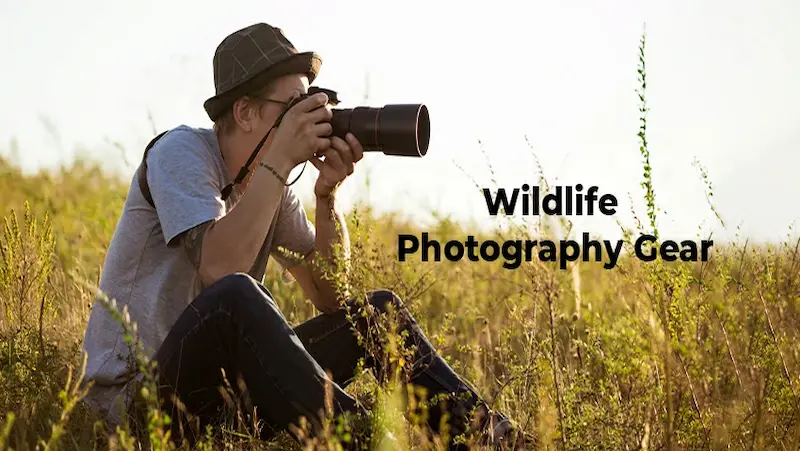
Necessary Equipment for Wildlife Exploration:
Camera Gear:
- A high-quality camera is the backbone of wildlife photography. Consider a DSLR or mirrorless camera with a fast autofocus system and good low-light performance.
- Telephoto lenses with a focal length of 300mm or more are essential for capturing distant wildlife without disturbing their natural behavior.
- Tripods and monopods provide stability for longer lenses and help achieve sharp, blur-free shots.
Binoculars:
- Opt for binoculars with a decent field of view and magnification suitable for wildlife observation. A waterproof and fog-proof design is beneficial for various weather conditions.
- Image stabilization technology can enhance stability, especially when observing wildlife from a distance.
Field Guides:
- Carry comprehensive field guides specific to the region you’re exploring. These guides help identify animal species, understand behavior, and learn about ecosystems.
- Digital field guide apps can be convenient, providing information at your fingertips.
Clothing and Footwear:
- Invest in lightweight, moisture-wicking clothing for comfort during long hikes.
- Sturdy, waterproof boots with good traction are essential for navigating different terrains.
Recommendations for Gear:
Camera Recommendations:
- Canon EOS 5D Mark IV: A reliable DSLR with excellent image quality and fast autofocus.
- Sony Alpha a7R IV: A mirrorless option known for its high resolution and advanced autofocus system.
Binocular Recommendations:
- Nikon Monarch 7: Offers a wide field of view, great optics, and a durable design.
- Vortex Optics Diamondback HD: Provides excellent clarity and is budget-friendly.
Field Guide Recommendations:
- “The Sibley Guide to Birds” by David Allen Sibley: A comprehensive guide for bird enthusiasts.
- “Mammals of North America” by Roland W. Kays and Don E. Wilson: An authoritative guide to mammalian wildlife.
Tips on Using Tools Effectively:
Camera Techniques:
- Use a tripod for stability, especially in low light conditions.
- Learn about your camera’s settings and practice adjusting them quickly to capture spontaneous wildlife moments.
Binocular Techniques:
- Practice proper binocular technique to reduce eye strain.
- When scanning for wildlife, move your binoculars in a slow, sweeping motion to cover a larger area.
Field Guide Usage:
- Familiarize yourself with the layout of your field guide to quickly locate relevant information.
- Note the habitat and behavior of the species you’re observing for a more in-depth understanding.
Learning Through Wildlife Exploration: Educational Insights
In the pursuit of knowledge and personal growth, there is a profound connection between experiential learning and exploring the wonders of wildlife. The natural world offers an unparalleled classroom where lessons extend beyond textbooks and traditional education settings.
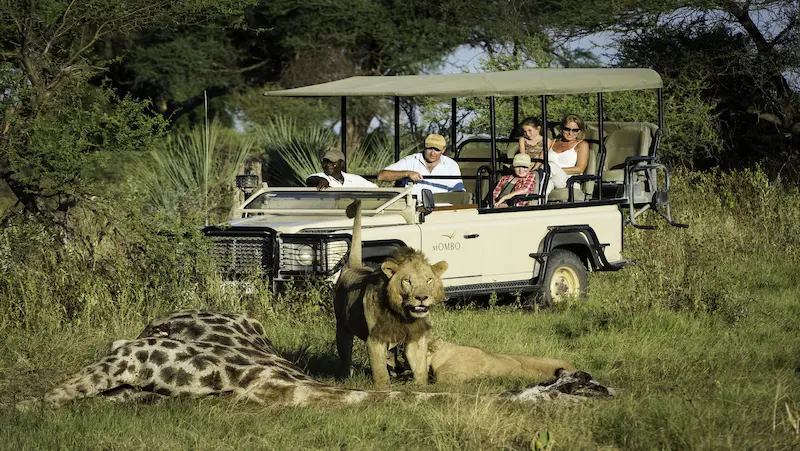
The Role of Wildlife Exploration in Experiential Learning:
Engaging the Senses: One of the key aspects of wildlife exploration is its ability to engage multiple senses. The sights, sounds, smells, and textures of the natural world create a rich and immersive learning environment. This multisensory experience enhances memory retention and deepens the understanding of concepts.
Fostering Curiosity: Wildlife exploration sparks curiosity in learners of all ages. Observing animals in their natural habitats encourages questions, critical thinking, and a desire to understand the intricacies of the ecosystem. This curiosity-driven learning is a powerful motivator that goes beyond the confines of traditional classrooms.
Environmental Awareness: Experiencing wildlife in its natural habitat instills a sense of responsibility for the environment. Students learn firsthand about the delicate balance of ecosystems, the impact of human activities, and the importance of conservation. This awareness creates environmentally conscious individuals who are motivated to protect our planet.
Case Studies or Examples of Valuable Lessons Learned Through Exploration:
Predator-Prey Relationships:
Witnessing the interaction between predators and prey in the wild provides invaluable insights into the circle of life. Observing a predator stalking its prey or the strategies prey employ for survival teaches lessons in adaptation, symbiosis, and the interconnectedness of species.
Migration Patterns:
Bird migration is a fascinating phenomenon that offers lessons in navigation, adaptation, and survival. Students who witness the annual migration of birds gain a firsthand understanding of how environmental factors influence animal behavior, fostering a deep appreciation for the complexity of nature’s cycles.
Biodiversity in Coral Reefs:
Exploring coral reefs unveils the extraordinary biodiversity within these ecosystems. Students can learn about the interdependence of different species, the impact of climate change on coral health, and the importance of preserving these delicate environments for the well-being of countless marine species.
Connecting Real-World Experiences with Educational Growth:
Field Trips and Outdoor Education:
Integrating wildlife exploration into formal education through field trips and outdoor education programs bridges the gap between theory and practice. These experiences not only enhance academic learning but also contribute to the development of practical skills, teamwork, and problem-solving abilities.
Technology and Virtual Reality:
In the digital age, technology plays a pivotal role in bringing wildlife exploration to classrooms worldwide. Virtual reality experiences, interactive simulations, and educational apps allow students to explore the natural world virtually, expanding access to these valuable learning opportunities.
Project-Based Learning:
Encouraging students to design and implement projects based on their wildlife exploration experiences fosters a sense of ownership and deeper understanding. Whether it’s creating a documentary, conducting research, or developing a conservation initiative, project-based learning solidifies the connection between real-world experiences and educational growth.
Conservation and Stewardship: Making a Difference
In a world where the delicate balance of ecosystems is constantly under threat, the importance of conservation and stewardship cannot be overstated. Wildlife exploration, while providing incredible opportunities for learning and appreciation, can also have significant impacts on the very species and environments we seek to admire.
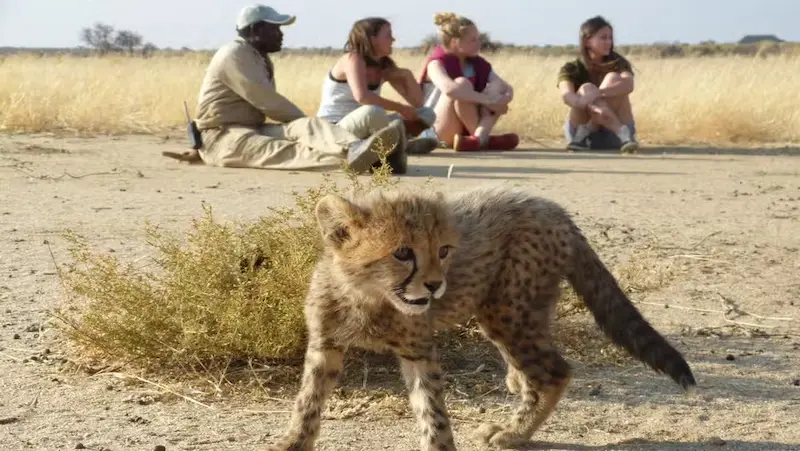
The Impact of Wildlife Exploration on Conservation Efforts:
While wildlife exploration can inspire awe and wonder, it is essential to recognize its potential negative impacts on the natural world. Habitat disruption, increased human-wildlife conflicts, and the disturbance of breeding and feeding behaviors are just a few examples of the consequences of unregulated exploration. Furthermore, the demand for exotic pets, wildlife products, and tourism can lead to illegal practices, threatening vulnerable species.
To address these challenges, conservation efforts must focus on sustainable practices that balance the benefits of wildlife exploration with the need to protect and preserve ecosystems. This involves establishing and enforcing regulations, creating wildlife sanctuaries, and raising awareness about the importance of responsible interaction with the natural world.
Tips on Responsible and Ethical Wildlife Observation:
Research and Choose Reputable Tour Operators: Before embarking on a wildlife expedition, thoroughly research and select tour operators committed to ethical and sustainable practices. Ensure they prioritize the well-being of wildlife and adhere to local and international conservation standards.
Maintain a Safe Distance: Respect the natural behavior of animals by observing from a safe and non-intrusive distance. This not only minimizes stress on the wildlife but also ensures your safety.
Follow Leave No Trace Principles: Practice a “Leave No Trace” approach by avoiding littering, respecting established trails, and refraining from touching or feeding wildlife. Leave the environment as you found it to minimize your ecological footprint.
Use Appropriate Equipment: Equip yourself with binoculars and cameras with powerful zoom lenses to capture moments without the need to approach too closely. This ensures a safer and less disruptive experience for both you and the wildlife.
Educate Others: Share your knowledge about responsible wildlife observation with fellow enthusiasts, friends, and family. The more people who adopt ethical practices, the greater the positive impact on conservation efforts.
Encouraging Readers to Become Stewards of the Environment:
Support Conservation Organizations: Contribute to the preservation of wildlife and ecosystems by supporting reputable conservation organizations. Financial support, volunteering, or spreading awareness about their initiatives can make a substantial difference.
Advocate for Responsible Tourism: Encourage responsible tourism practices by advocating for regulations that prioritize conservation and ethical wildlife observation. Engage with local communities to ensure that tourism benefits both people and nature.
Lead by Example: Be a steward of the environment in your daily life. Reduce your carbon footprint, recycle, and choose sustainable products. Your actions can inspire others to adopt a more eco-friendly lifestyle.
Stay Informed and Educate Others: Stay updated on environmental issues and conservation efforts. Share information on social media, engage in conversations, and empower others to make informed choices for the well-being of our planet.
Overcoming Challenges: Navigating the Wild
Exploring the untamed beauty of the wilderness can be a thrilling and transformative experience, but it comes with its own set of challenges. Whether you’re a seasoned adventurer or a novice nature enthusiast, overcoming obstacles in wildlife exploration is a rite of passage.
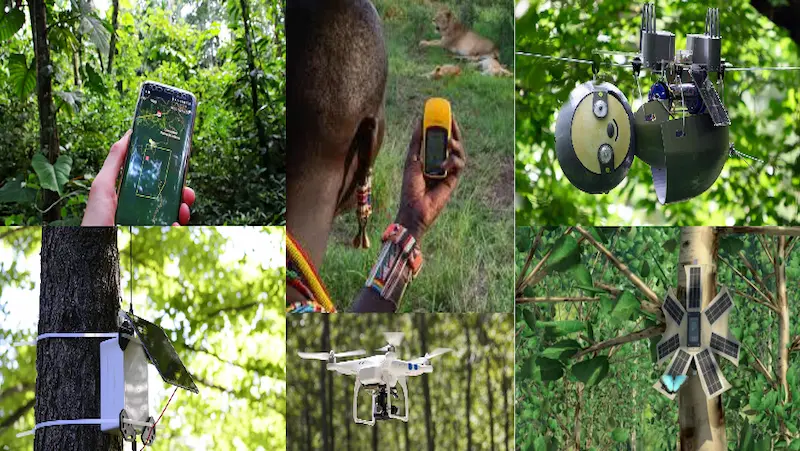
Common challenges in wildlife exploration:
Terrain and Weather: The unpredictable and often harsh conditions of the wilderness can make exploration challenging. From dense forests to arid deserts, each environment poses its own set of difficulties. Unpredictable weather patterns, including sudden storms or extreme temperatures, add an additional layer of complexity.
Wildlife Encounters: While the goal is often to observe and appreciate wildlife, encounters with unpredictable and potentially dangerous animals can pose a significant challenge. Knowing how to handle these situations is crucial for a safe and enjoyable experience.
Navigational Difficulties: Dense foliage, lack of clear trails, and vast landscapes can make navigation a daunting task. Getting lost or disoriented in the wild is not only disheartening but can also be dangerous.
Logistical Issues: Adequate preparation is key, but unexpected logistical issues such as equipment failures, insufficient supplies, or medical emergencies can disrupt even the best-laid plans.
Strategies for overcoming obstacles and staying safe:
Thorough Preparation: Knowledge is your greatest ally in the wild. Research the specific challenges of the area you’re exploring, familiarize yourself with local wildlife and vegetation, and equip yourself with the necessary skills and tools.
Effective Navigation: Utilize maps, GPS devices, and other navigation tools to stay on course. Additionally, consider learning basic orienteering skills to enhance your ability to navigate without reliance on technology.
Wildlife Safety Measures: Understand the behavior of local wildlife, carry appropriate deterrents, and know how to react in case of an encounter. Respect their habitat and maintain a safe distance to minimize the risk of conflict.
Adaptive Problem-Solving: Expect the unexpected and be ready to adapt. Carry backup supplies, learn basic survival skills, and have contingency plans in place for unforeseen challenges.
Inspiring stories of perseverance in the face of challenges:
Jane Goodall – Studying Chimpanzees in Tanzania:
Renowned primatologist Jane Goodall faced numerous challenges during her groundbreaking research on chimpanzees in Tanzania. Overcoming skepticism from the scientific community and adapting to the wild environment, she revolutionized our understanding of primates.
Aron Ralston – 127 Hours:
Aron Ralston’s incredible story of survival after being trapped by a boulder in Utah’s Blue John Canyon showcases the power of determination. Ralston amputated his own arm to free himself, emphasizing the strength of the human spirit in the face of dire circumstances.
Dian Fossey – Gorilla Conservation in Rwanda:
Dian Fossey dedicated her life to the study and protection of mountain gorillas in Rwanda. Despite facing threats from poachers and challenging living conditions, she persisted in her mission, leading to significant strides in gorilla conservation.
Capturing the Moment: Documenting Your Wildlife Discoveries
Embarking on a wildlife exploration is a thrilling and enriching experience that allows us to connect with the natural world on a profound level. The sights, sounds, and encounters with fascinating creatures create memories that are worth cherishing. One of the most effective ways to preserve and share these moments is through documentation.
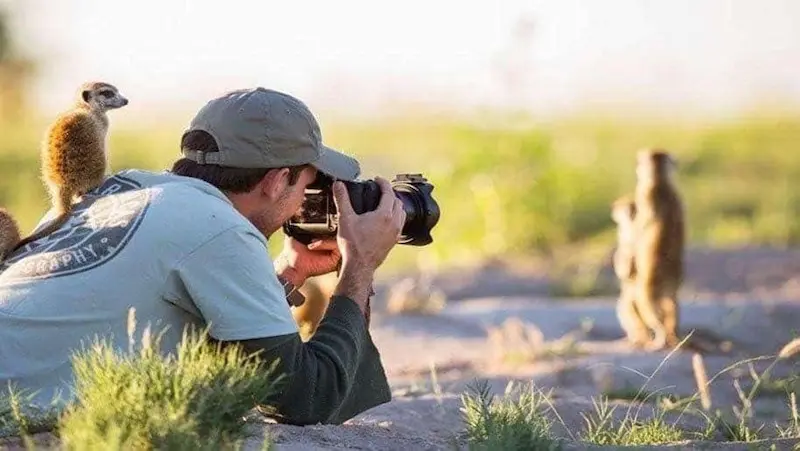
Importance of documenting experiences for personal and educational purposes:
Preservation of Memories: Documenting your wildlife discoveries allows you to preserve the magic of the moment. As time passes, memories may fade, but a well-documented journal or a series of photographs can transport you back to the emotions and details of that particular encounter.
Enhanced Appreciation: By documenting your experiences, you cultivate a deeper appreciation for the natural world. Not only does it allow you to relive the excitement, but it also encourages reflection and a better understanding of the intricate web of life that surrounds us.
Educational Value: Sharing your documented experiences can contribute to the broader understanding of wildlife. Whether through personal conversations, social media, or contributing to citizen science projects, your observations can become valuable data for researchers and enthusiasts alike.
Contribution to Conservation: Documenting wildlife encounters can be a powerful tool for raising awareness about the importance of conservation. Sharing your experiences can inspire others to appreciate and protect the biodiversity that exists in our world.
Tips on photography and journaling during wildlife exploration:
Carry the Right Equipment: Invest in a good camera or a quality smartphone with a capable camera. Ensure that you have sufficient memory cards and batteries, as wildlife encounters may happen unexpectedly.
Patience is Key: Wildlife photography often requires patience. Spend time observing and waiting for the right moment. Avoid disturbing the animals, and let them behave naturally.
Learn Animal Behavior: Understanding the behavior of the wildlife you are observing allows you to anticipate their actions. This knowledge can help you position yourself for better photographs and safer interactions.
Capture the Environment:Don’t just focus on the wildlife; capture the entire scene. Include the habitat, landscapes, and other elements that contextualize the moment. This adds depth to your documentation.
Maintain a Wildlife Journal: Keep a wildlife journal to accompany your photographs. Describe the environment, note the weather conditions, and document any interesting behaviors observed. This adds a narrative dimension to your documentation.
Respect Ethical Guidelines: Prioritize the well-being of the wildlife. Keep a safe distance, avoid using flash photography, and adhere to ethical guidelines to ensure that your presence does not disturb or harm the animals.
Conclusion
In conclusion, the transformative power of wildlife exploration is undeniable. Delving into the natural world not only fosters a deep connection with the environment but also cultivates a profound appreciation for the beauty and diversity of life. Through this exploration, individuals can undergo personal growth, gaining insights that extend beyond the realms of nature into the fabric of their own existence. The transformative impact of wildlife exploration lingers as a testament to the intrinsic bond between humanity and the wonders of the wild.
To get your hands on more such articles, educational content, and free resources on coding classes for kids, online robotics classes for kids, game development, etc., check out the BrightCHAMPS Page now!
Frequently Asked Questions
A1: Wildlife exploration involves observing and learning about animals and their habitats in their natural environments.
A2: It’s fun because it’s an interactive way to connect with nature, offering hands-on learning experiences.
A3: Through wildlife exploration, you can learn about ecosystems, animal behavior, and the importance of conservation.
A4: Yes, it’s suitable for everyone—children, adults, and families can all enjoy and learn from this experience.
A5: Begin by visiting nature reserves, parks, or joining guided tours led by experienced naturalists to initiate your wildlife exploration journey.
A6: Benefits include increased environmental awareness, a deeper understanding of biodiversity, and the joy of connecting with the natural world.

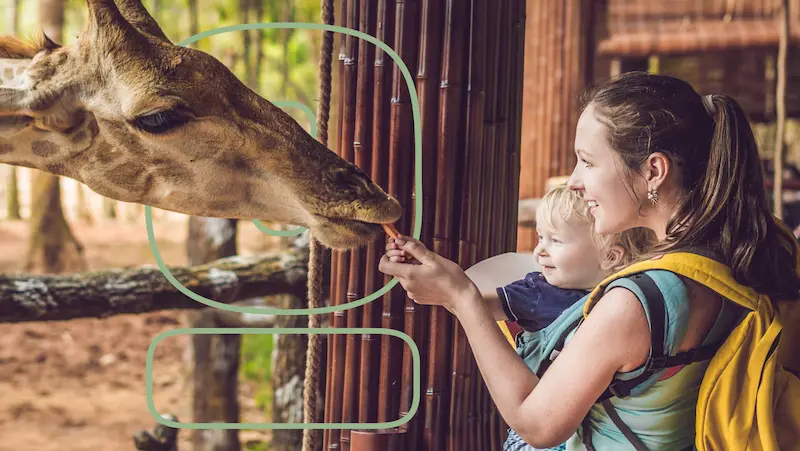
 We are an army of educators and passionate learners from BrightChamps family, committed to providing free learning resources to kids, parents & students.
We are an army of educators and passionate learners from BrightChamps family, committed to providing free learning resources to kids, parents & students.











